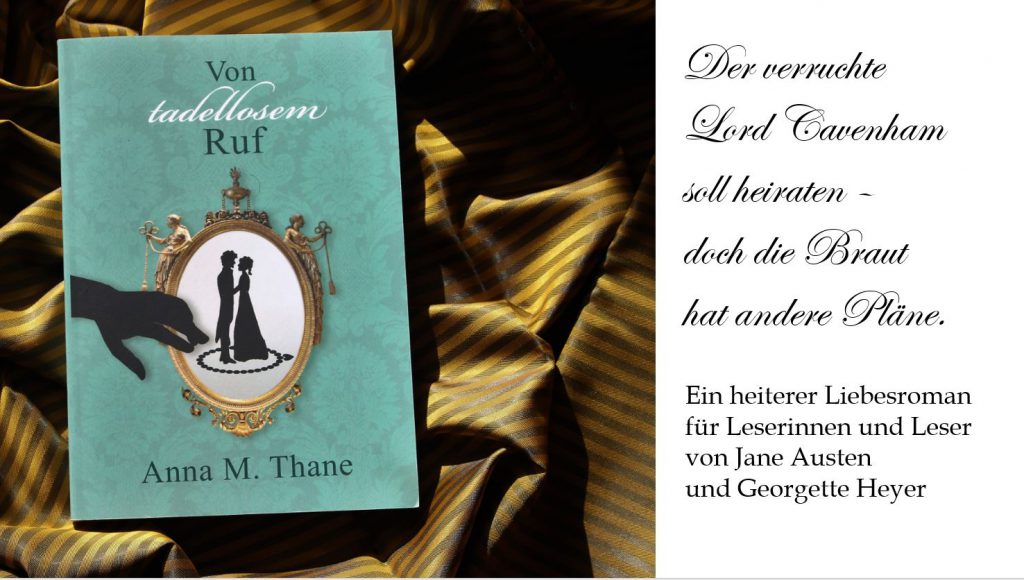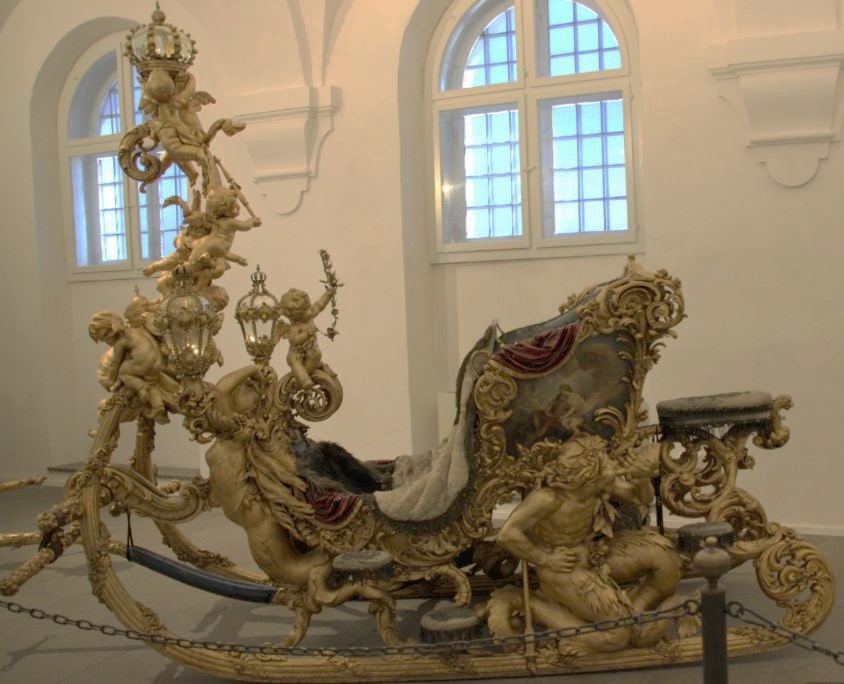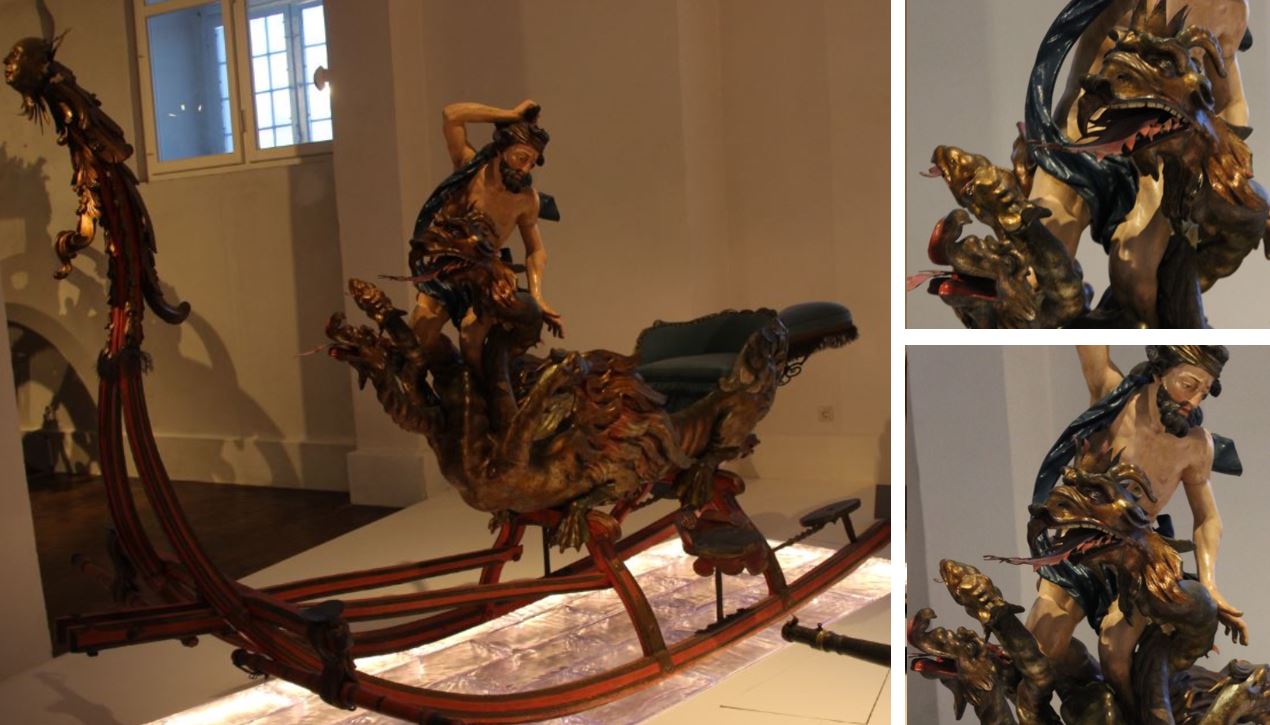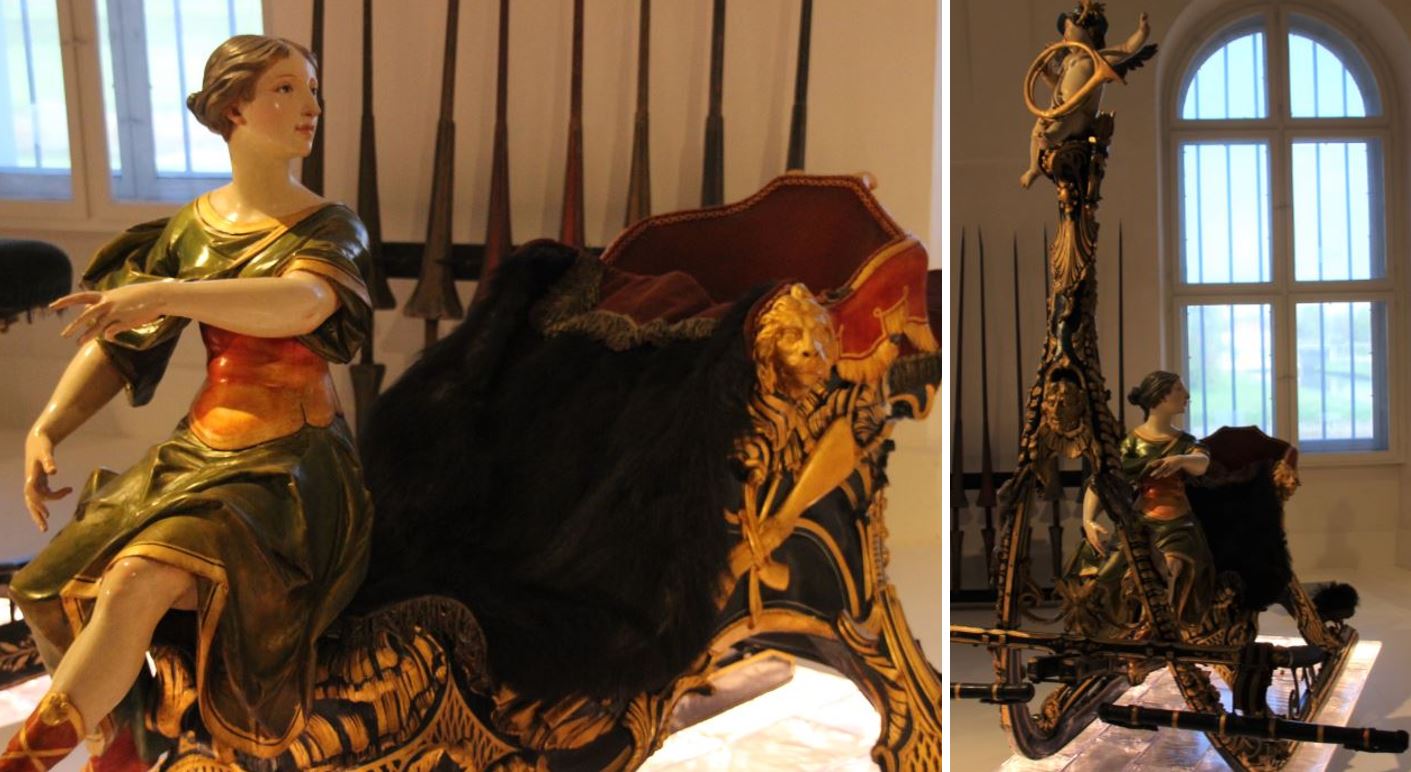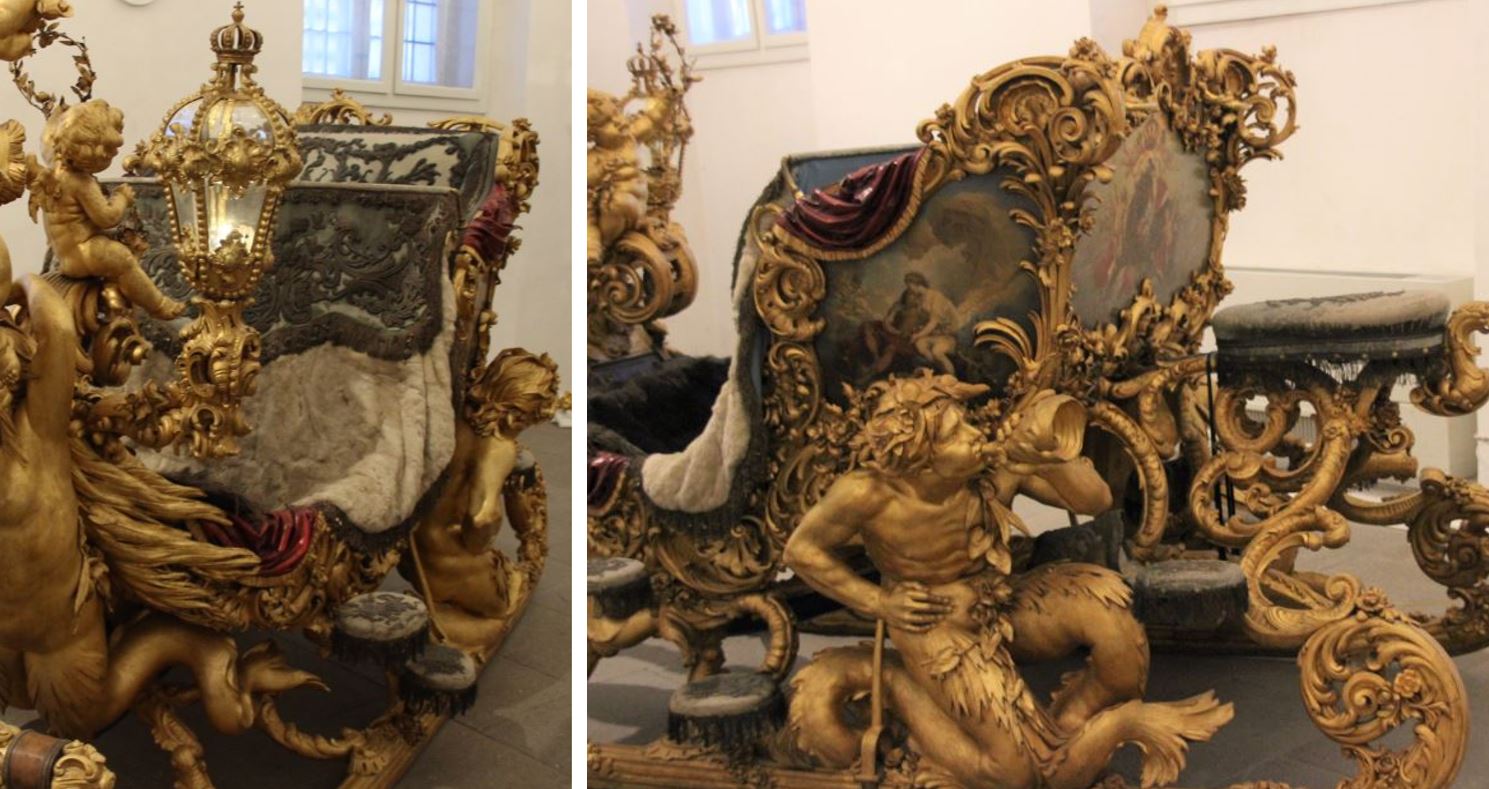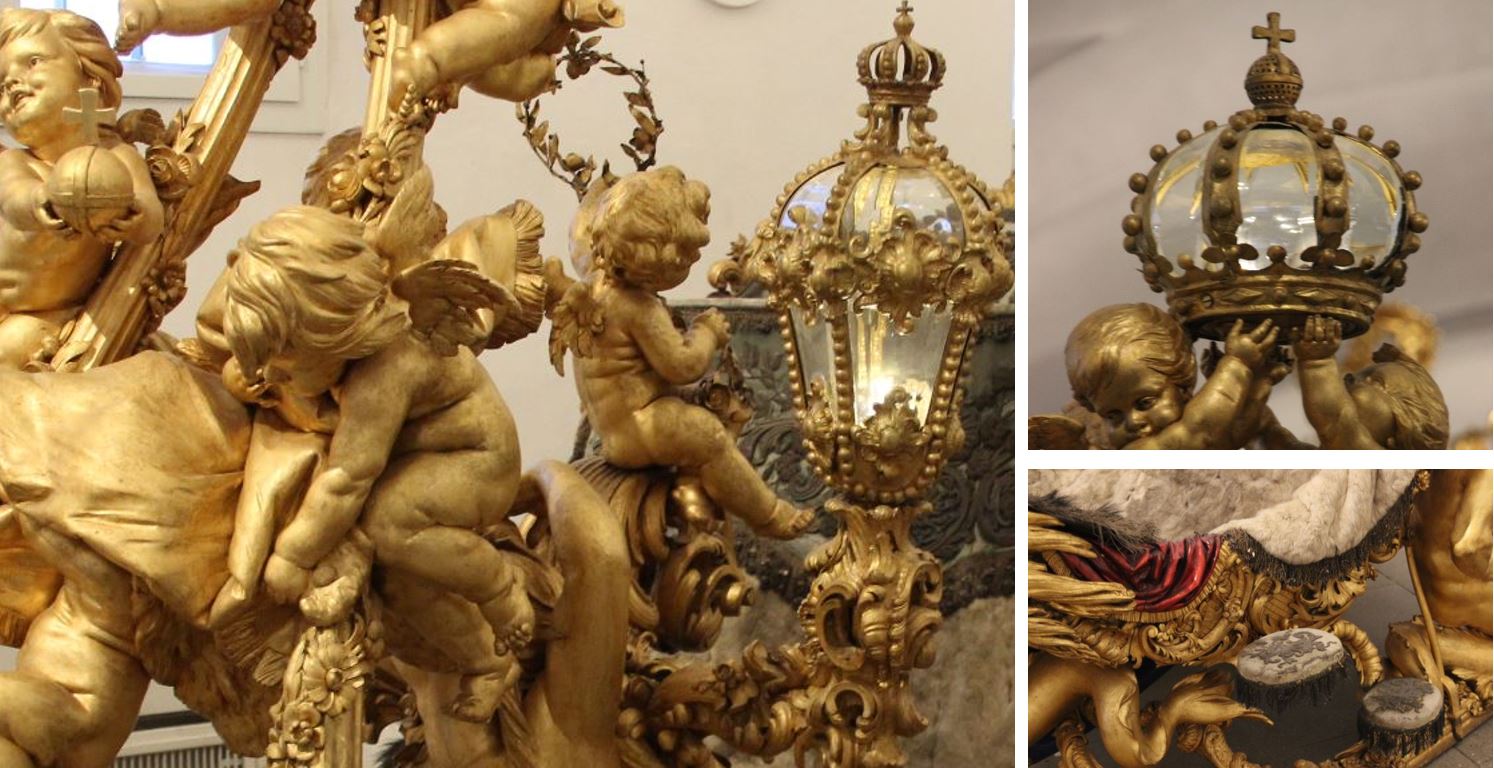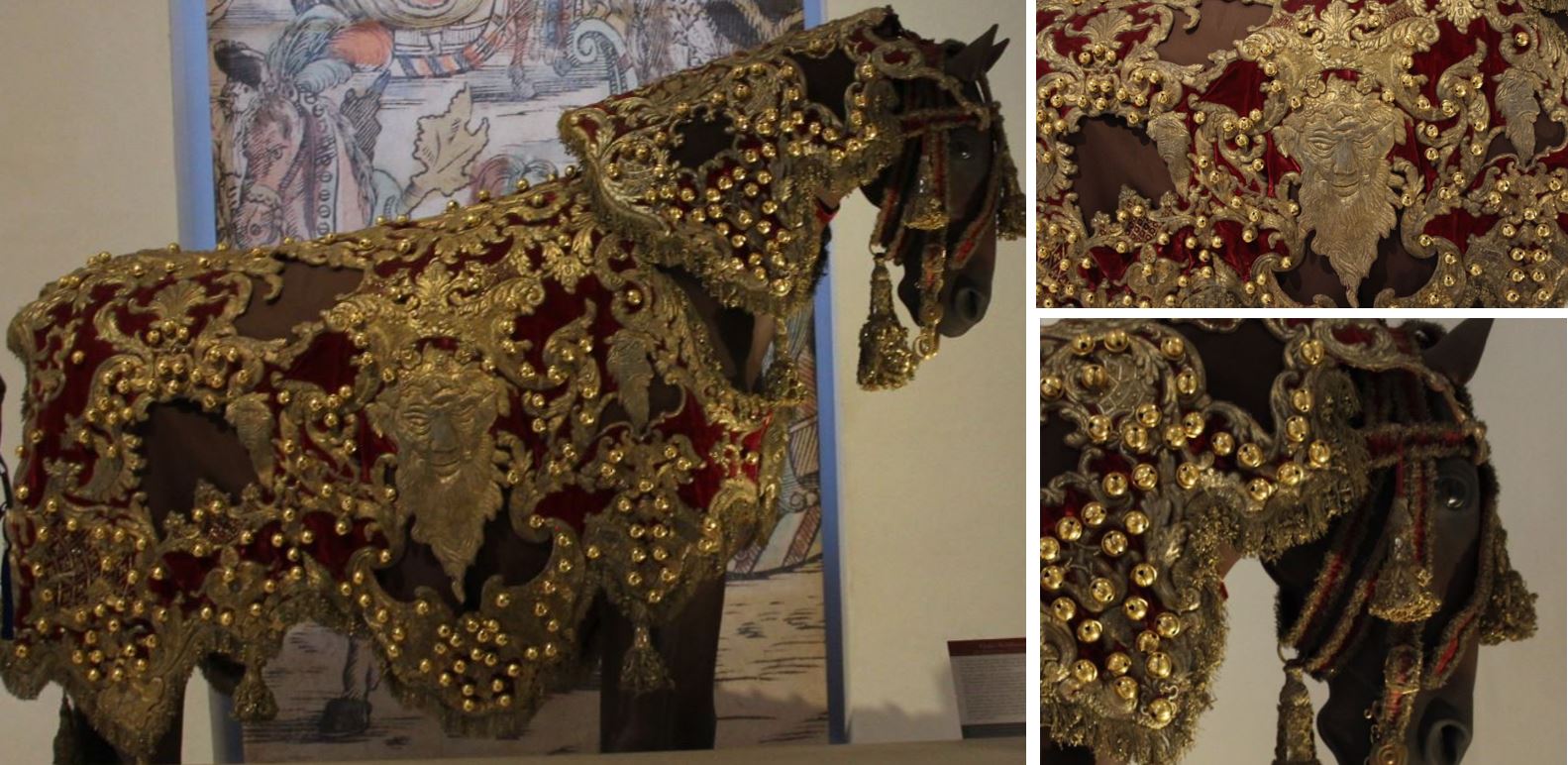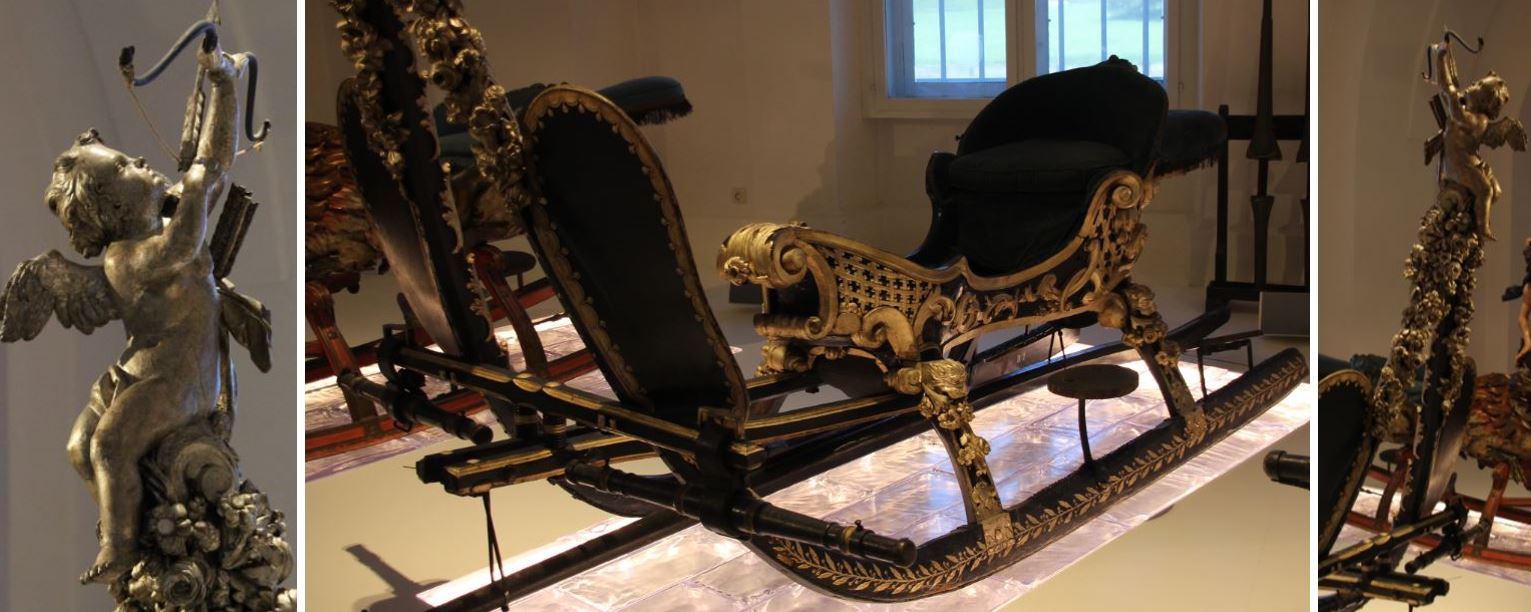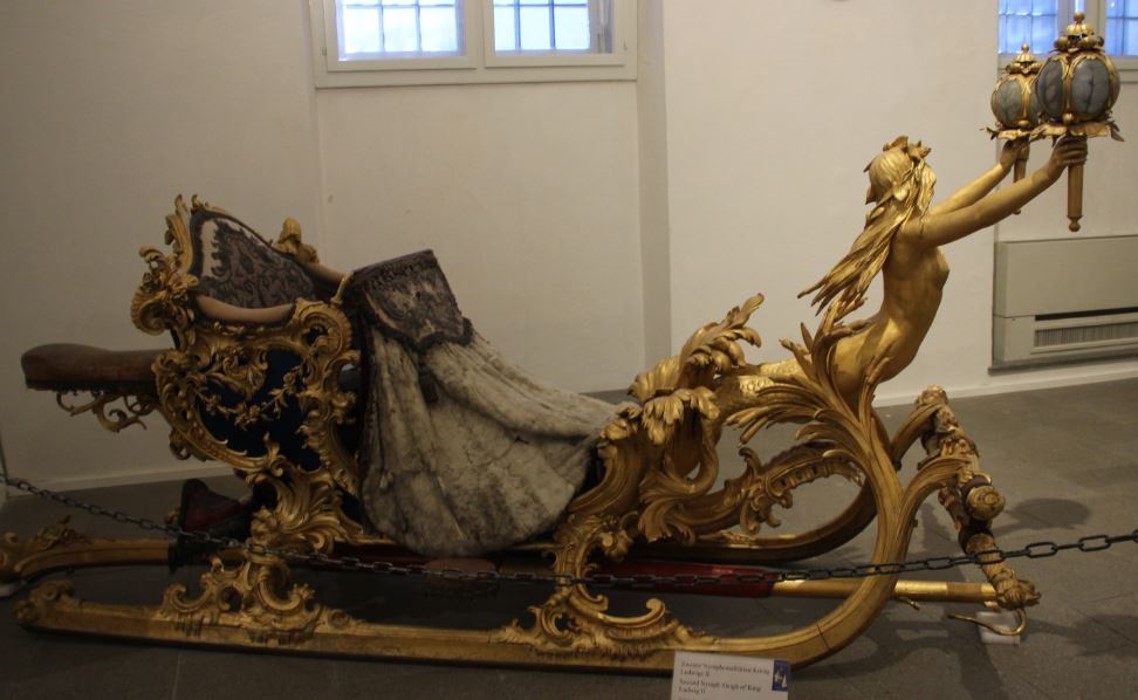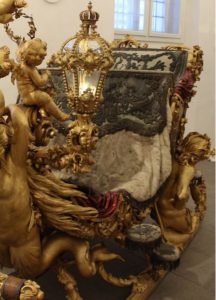 Hard winters were common in the 18th century, especially on the Continent. Snow and ice made roads impossible to pass by carriages. They were, however, still manageable by mule-drawn sleighs. Actually, in the Alps, frozen roads were easier to travel in the winter than in the summer, and bridges made of snow allowed people to cross many rivers otherwise impassable. Thus, the beginning of the winter did not mark the time to stay at home but to start traveling. Famous poet Goethe, e.g., crossed the St. Gotthard pass, enjoying the winter scenery.
Hard winters were common in the 18th century, especially on the Continent. Snow and ice made roads impossible to pass by carriages. They were, however, still manageable by mule-drawn sleighs. Actually, in the Alps, frozen roads were easier to travel in the winter than in the summer, and bridges made of snow allowed people to cross many rivers otherwise impassable. Thus, the beginning of the winter did not mark the time to stay at home but to start traveling. Famous poet Goethe, e.g., crossed the St. Gotthard pass, enjoying the winter scenery.
“A great train of mules brought the place to life with the sound of their bells. … The way led up over the rocks of the ever-cascading Reuss and the waterfalls here form the most beautiful shapes.”
Traveling in the winter
Many travelers from England discovered the delights of the picturesque winter scenery while on the Grand Tour. If they had come in their own carriages, these had to be left behind. Other than going by sleigh, tourists could simply walk or ride a mule. Ladies could also hire locals to carry them in a vehicle similar to the sedan chair. Yet, the winter travel was dangerous. Besides the frosty weather, highwaymen were a common risk until well into the 19th century.
Sleigh parades: a winter pleasure at the Court
At Continental Courts, king and courtiers set out in the winter month in sleighs parades to entertain their important guests. Parades were splendid affairs. Court sleighs were opulent, gilded vehicles, usually with a colorful figure of a Greek or Roman God perched at the front. The seats were often trimmed with fur, and the elevated coachman’s seat had crimson risers.
The lady would sit on the seat inside; the gentlemen would perch behind, controlling the horse using long reins. As the two occupants were physically close, sleigh rides were reputed to have an erotic component.
Sleigh rides were especially popular during the carnival season. The participants would dress in costumes. After the parade, the festivity continued at the palace, e.g. with a masked ball.
Find here a selection of beautiful Continental sleighs of the 18th and 19th century.
Carousel sleigh “Hercules”
So-called carousels were competitive amusements. The sleighs were driven by a gentleman along a marked course. His lady would attempt, with the aid of a lance or sword, to hit rings or paper-mâché figures.
The Hercules sleigh was made around 1680 for the young Elector Max Emmanuel (Bavaria)
Carousel sleigh “Diana”
The Court’s passion for hunting is the theme of this sleigh, made around 1740 in Bavaria.
Renaissance or Dress Sleigh
Sleigh of King Ludwig II of Bavaria, around 1872
Ornate horse blanket
The blanket has 426 gilded brass sleigh bells. It was made around 1740 for the horses of Elector Karl Albrecht, who later became Emperor Karl VII.
Child’s Sleigh
This sleigh was intended for the indoor use by the young princes and princesses. It was drawn by a pony, dogs or even sheep. The children of Elector Karl Albrecht learned to drive sleighs and carriages from young age.
Carousel Sleigh Cupid
Cupid refers to the erotic component of sleigh rides at Court.
Bavarian Sleigh, around 1740
Nymph Sleigh
Sleigh of King Ludwig II of Bavaria, around 1881
Detail: warm feet during the sleigh ride
Related articles
A Carriage Enthusiast’s Paradise
- Travelling in the 18th century? Don’t forget your passport!
- Writer’s Travel Guide: The British and the Grand Tour to the Kingdom of Naples and Sicily (Part 1)
- Writer’s Travel Guide: The British and the Grand Tour to the Kingdom of Naples and Sicily (Part 2)
- Writer’s Travel Guide: The British Tourist and Napoleonic Milan
Sources
Ryder, Jill (publisher): The Carriage Journal: Vol. 49 No 1 January 2011.
Ryder, Jill (publisher): The Carriage Journal: Vol 55 No 1 January 2017
Marstall Museum at Nymphenburg Palace, Munich, Germany
Article by Anna M. Thane, author of the novel
“Von tadellosem Ruf” (http://amzn.to/2TXvrez)
